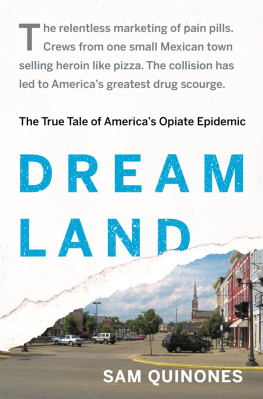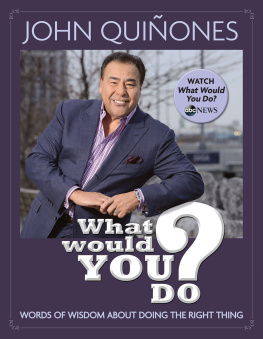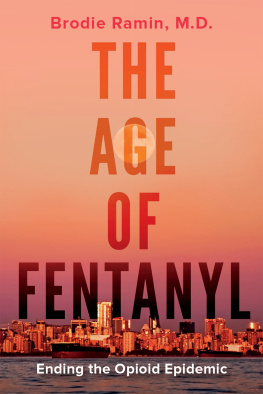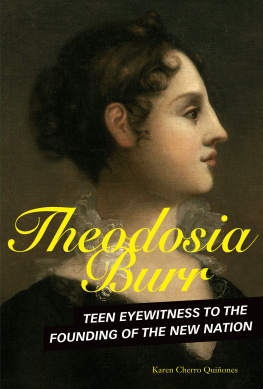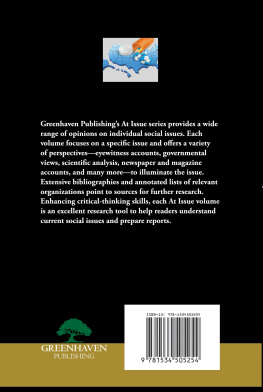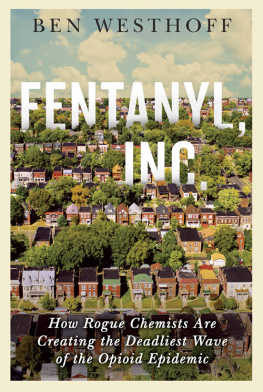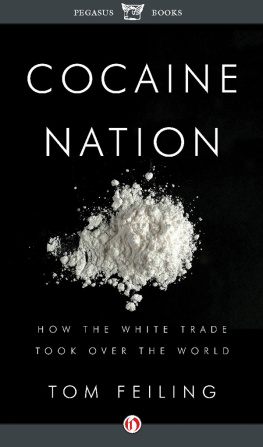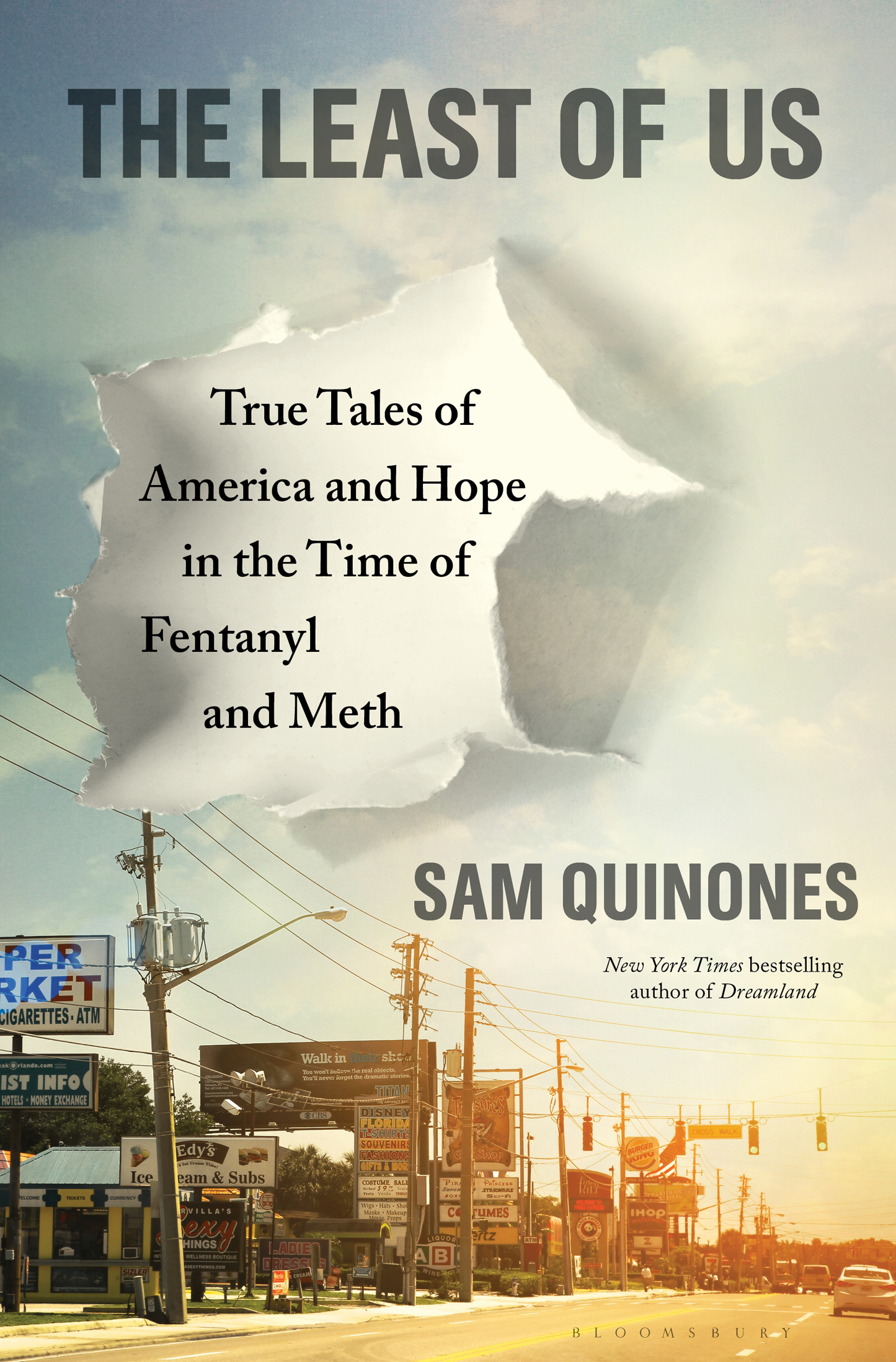Contents
Guide
Pagebreaks of the print version

To
Ricardo J. Quinones,
19352019
Father, Husband, Scholar, Poet
Thank you, Dad
BY THE SAME AUTHOR
Dreamland: The True Tale of Americas Opiate Epidemic
Dreamland: The True Tale of Americas Opiate Epidemic (A Young Adult Adaptation)
Antonios Gun and Delfinos Dream: True Tales of Mexican Migration
True Tales from Another Mexico: The Lynch Mob, the Popsicle Kings, Chalino, and the Bronx

CONTENTS
Precisely the least, the softest, lightest, a lizards rustling, a breath, a flash, a momenta little makes the way of the best happiness.
FRIEDRICH NIETZSCHE
In as much as ye have done it unto one of the least of these my brethren, you have done it unto me.
MATTHEW 25:40 , KING JAMES BIBLE
Not long after my last book, Dreamland , came out, I was speaking in the small town of Portsmouth, Ohio, where part of that book is set.
After my speech, an older couplethin, short, and palecame up to a table where I was signing books. We were alone. Quietly, so only I could hear, the man said that their daughter was in prison for many years for a crime related to her opioid addiction. He said they were raising her young daughter and didnt know what to do. They were exhausted. They were concerned they wouldnt live long enough to see the girl through to adulthood. He was a man of few words and no tears. He looked shell-shocked.
Its so hard, he said.
I was new at this and didnt know how to respond. We each held the others hand, frozen in mid-handshake, this man and I, and stared into each others eyes as his wife stood by in silence. I squeezed his hand finally, and I think I said something about them not being alone. That I was sorry. They moved on, and I can still see the man looking back at me and nodding.
This book grew from that moment and others like it.
In Dreamland , I had endeavored to tell the complex tale of our nationwide epidemic of opioid addictionpain pills and heroin at the time. Doctors were pushed and pressured into an idea that wasnt always true: that virtually every pain patient could be prescribed bottles of narcotics without risk of addiction. This, in turn, led to the idea that pills could be prescribed in large amounts for long periods to almost anyone. As a species, we have five thousand years of experience with the opium poppy. It contains a substance that is both the best painkiller we know and the most intensely addictive. Yet beginning in the mid-1990s and for years after we decided that only one of those was true.
This was the Opioid Era in America, characterized, from what I could tell, by a search for convenience and comfort and thus easy answers to complicated problemsamong them, one magical pill for all human pain. This era was also about our own isolation and destruction of community in areas both rich and poor. It was about an unqualified belief in the private sector.
Opioid pain relievers in unprecendented number year after year were prescribed from coast to coast. They were overlaid on American populations riven by trauma or generational poverty, or well-to-do areas with large houses and barren sidewalks. They spilled over a culture in which so many addictive legal substances and services were already finely tuned to attack our brains. Predictably, narcotic pain relievers turned out to be addictive for a lot of patients the longer they used them. The pills sloshed across the country and onto street black markets, where many others grew addicted. Some of these newly dependent users moved on to heroin. As years passed, that market grew large enough to awaken Mexican drug traffickers.
This crisis spread and intensified nationwide. Still, I found that few people wanted to talk about it. Families were ashamed of their loved ones addictions. Believing they were alone, families made mistakes trying to help their addicted loved one. They depleted finances; trust dissolved and marriages ended. When these loved ones died, their obituaries cause of death were fabrications. Families isolated to hide the truth. So the scourge continued to spread like a cancer, devouring people and places across the country, abetted by a national silence.
I assumed Dreamland too would be ignored when it came out in April 2015. Instead, I watched public awareness ignite. Obituaries began to tell the truth. Parents came out of the shadows. I was surprised to be invited to speak around the country, and the invitations multiplied to more than two hundred speeches in four years. I spoke to conferences of public health nurses and narcotics agents, by social workers and addiction counselors, by doctors, judges, and to at least two dozen colleges. Perhaps most fulfilling of all, though, were the dozens of small towns where I spoke: Bluffton, Indiana; Chillicothe, Ohio; Spartanburg, South Carolina; Worcester, Massachusetts; Peoria, Illinois, and many more.
From the road, I watched the story change. After years of escalating, doctors pain-pill prescribing fell, though not before creating an enormous new population of opiate addicts who would use anything that kept withdrawal away. Now the drugs came mostly from the underworld, piggybacking on the consumer market that the epidemic created. Heroin took the place of pain pillsfor a while.
As I traveled, I then watched the dawning of the era of illegal synthetic drugs. Traffickers discovered that making drugs in labs was far more profitable than growing them. Synthetic drugs had been made before, of course, but nothing on the scale of what was underway by 2016.
Fentanyl was the eras poster drug. A wonderful medical tool, the hyperpotent synthetic emerged as the underworlds hyperprofitable heroin substitute. Supplies of it came from China, then from Mexico, as well. Fentanyl upended the dope world the way tech disrupted business. No farmland neededno pesticides, no harvesting, no seasons, no irrigation. It shrank the heroin supply chainfrom dozens of people down to two or three, none of whom were likely to be scary cartel types.
Illicit fentanyl spread first through the midwestern and eastern states. By 2018 it was all over the West as well. Overdose deaths shot farther north; more Americans died yearly than in the entire Vietnam War. Cuyahoga County, where Cleveland is located, saw overdoses double from 2014 to 2017from 353 to 727, with almost 500 deaths involving fentanyl. San Francisco saw a similar increase between 2018 and 2020, when three times as many people died of overdoses as of COVID-19. Philadelphia had long been a heroin town, but by 2019 90 percent of 1,150 fatal overdoses were due to fentanyl.
Traffickers, meanwhile, had discovered a way to make methamphetamine in harrowing new amounts. While I was on the road, their meth reached all corners of the country and became the fourth stage of the drug-addiction crisis. Opiate addicts began to switch to meth, or use both together. This made no sense in the traditional drug world. One was a depressant, the other a stimulant. But it was as if their brains were primed for any drug.
This stage did not involve mass deaths. Rather, the new meth gnawed at brains in frightening ways. Suddenly users displayed symptoms of schizophreniaparanoia, hallucinations. The spread of this meth provoked homelessness across the country. Homeless encampments of meth users appeared in rural townsTheyre almost like villages, one Indiana counselor said. In the West, large tent encampments formed, populated by people made frantic by unseen demons in Skid Row in Los Angeles, Sunnyslope in Phoenix, the tunnels in Las Vegas. This methamphetamine, meanwhile, prompted strange obsessionswith bicycles, with flashlights, and with hoarding junk. In each of these places, it seemed mental illness was the problem. It was, but so much of it was induced by the new meth.


